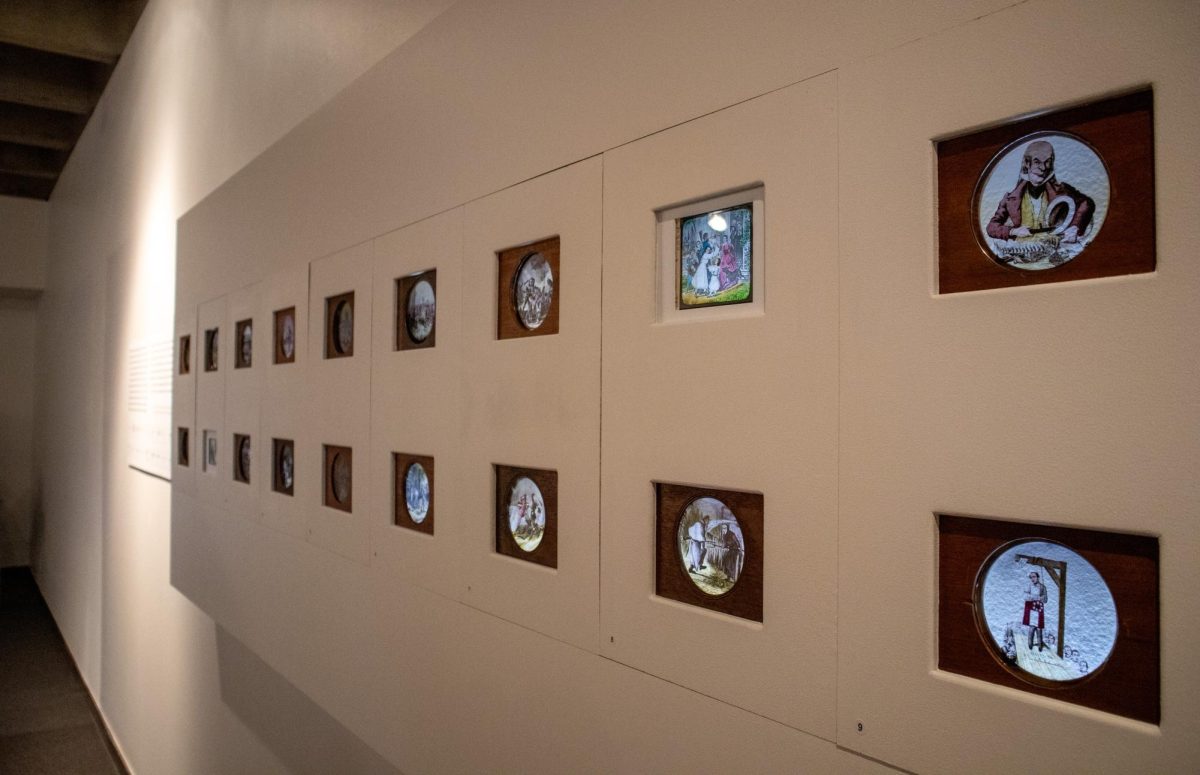On Nov. 7, the Anderson Gallery opened its doors to a new exhibition called “Acts of Projection: Magic Lantern Shows and the U.S. Civil War.” The exhibition features art from the Civil War curated by students in the art history capstone class and focuses on war’s history, specifically how artists used lantern shows and paintings to process the trauma of the war. It also includes work from artist Johnny DiBlasi, an assistant professor of art and visual culture from Iowa State University, to further encapsulate the feeling of projection-based art in the modern day.
The capstone students and faculty who created the exhibition were tasked with researching the topic, finding appropriate works of art to display and organizing the gallery accordingly. Students were guided through this process by art history Professor Maura Lyons, one of the lead curators of the exhibition.
The four-credit class met three times a week throughout the fall 2024 semester, during which the 12 students in the course spent their time in either lectures about the skills of being an art curator or actively creating the exhibit through an interactive class structure. Lyons said together she and her students researched the topic, wrote about its history, installed the artwork and prepared for how to discuss the exhibit as a curator to the public for this final step towards an art history degree.
“I see my role as scaffolding those activities so it feels like students understand what they entail, have the resources they need to complete the tasks and see how it functions in a professional context,” Lyons said.
Students had to work together through this process in order to successfully see the curation of the exhibit.
“You really have to be on the same page in order for things to be functional,” Lyons said. “I think one of the challenges was just knowing that we’re not going to always be in a consensus, but that we can work towards that…It’s an adjustment, particularly if you are used to being responsible for your own work.”
Students were responsible for learning what it takes to be an art curator and the accountability and preparation that comes with it. One of these students, Grace Miller, a junior studying art history, said this experience influenced her perspective of art curators and how much effort it takes to effectively be one.
“I have a lot of respect for curators,” Miller said. “Their job is a lot harder than I thought it was. In my head, it was just house decoration…You have to be very knowledgeable on these subjects, so [that] when people ask you about it, you have an answer.”
The exhibit attempts to serve as a cultural commentary for the public regarding the Civil War and dealing with trauma through art, and the students aimed to to respectfully and properly encapsulate that through their hard work and everything that they learned along the way.
Lilah Anderson, director of the Anderson Gallery, took notice of the time and energy the students put into the exhibit curation and said she is grateful for their efforts.
“It’s always fun to watch them realize how physical putting up the show is, how many logistical challenges there are and it’s nice to see them face that,” Anderson said. “This group has been great. They’ve worked really well together, they’ve been very collaborative and they’ve worked very hard.”
The Anderson Gallery can be found in the Fine Arts Center, and the exhibit will be up until Jan. 15. The gallery will also be working in collaboration with historian and collector Mike Zahs to bring the magic lantern shows to reality at 7 p.m. on Nov. 20 at the Varsity Cinema. This event aims to recreate the projection shows of the late 1800s for modern audiences. Tickets to the event are available through the Varsity Cinema’s website.







